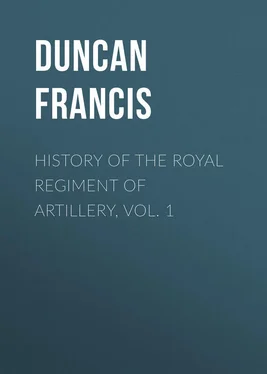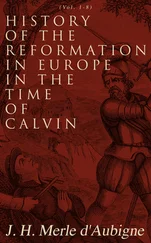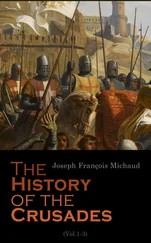Francis Duncan - History of the Royal Regiment of Artillery, Vol. 1
Здесь есть возможность читать онлайн «Francis Duncan - History of the Royal Regiment of Artillery, Vol. 1» — ознакомительный отрывок электронной книги совершенно бесплатно, а после прочтения отрывка купить полную версию. В некоторых случаях можно слушать аудио, скачать через торрент в формате fb2 и присутствует краткое содержание. Жанр: foreign_antique, foreign_prose, на английском языке. Описание произведения, (предисловие) а так же отзывы посетителей доступны на портале библиотеки ЛибКат.
- Название:History of the Royal Regiment of Artillery, Vol. 1
- Автор:
- Жанр:
- Год:неизвестен
- ISBN:нет данных
- Рейтинг книги:4 / 5. Голосов: 1
-
Избранное:Добавить в избранное
- Отзывы:
-
Ваша оценка:
- 80
- 1
- 2
- 3
- 4
- 5
History of the Royal Regiment of Artillery, Vol. 1: краткое содержание, описание и аннотация
Предлагаем к чтению аннотацию, описание, краткое содержание или предисловие (зависит от того, что написал сам автор книги «History of the Royal Regiment of Artillery, Vol. 1»). Если вы не нашли необходимую информацию о книге — напишите в комментариях, мы постараемся отыскать её.
History of the Royal Regiment of Artillery, Vol. 1 — читать онлайн ознакомительный отрывок
Ниже представлен текст книги, разбитый по страницам. Система сохранения места последней прочитанной страницы, позволяет с удобством читать онлайн бесплатно книгу «History of the Royal Regiment of Artillery, Vol. 1», без необходимости каждый раз заново искать на чём Вы остановились. Поставьте закладку, и сможете в любой момент перейти на страницу, на которой закончили чтение.
Интервал:
Закладка:
In 1697, after the Peace of Ryswick, there was in the English service a considerable number of comparatively trained artillerymen, whose services during the war entitled them to a little consideration. This fact, coupled with the gradual growth in the minds of the military and Ordnance authorities of the sense of the dangers that lay in the spasmodic system, and the desirability of having some proportion of artillerymen always ready and trained for service and emergency, brought about the first – albeit short-lived – permanent establishment, in a regimental form, of artillery in England. The cost of the new regiment amounted to 4482 l. 10 s. per annum, in addition to the pay which some of them drew as being part of the old Ordnance permanent establishment. But before a year had passed, the regiment was broken up, and a very small provision made for the officers. Some of the engineers, gentlemen of the Ordnance, bombardiers, and gunners were added to the Tower establishment, and seventeen years passed before this premature birth was succeeded by that of the Royal Regiment of Artillery.
But this landmark is a remarkable one; and in a history like the present deserves special notice. Some of the officers afterwards joined the Royal Artillery; most of them fought under Marlborough; and all had served in William's continental campaign either by sea or land. Two of the captains of companies, Jonas Watson and William Bousfield, had served in the train in Flanders in 1694, and Albert Borgard, its adjutant, was afterwards the first Colonel of the Royal Artillery.
The staff of the little regiment consisted of a Colonel, Jacob Richards, a Lieutenant-Colonel, George Browne, a Major, John Sigismund Schmidt, an Adjutant, Albert Borgard, and a Comptroller: of these the first four had been serving on active service in Flanders. There were four companies, very weak, certainly, and containing men paid both on the old and new establishments. Each contained 1 captain, 1 first-lieutenant, 1 second-lieutenant, 2 gentlemen of the Ordnance, 2 sergeants, and 30 gunners. Of these the gentlemen of the Ordnance and 15 gunners per company were on the old Tower establishment. The names of the captains not mentioned above were Edward Gibbon, and Edmund Williamson.
There were also in the Regiment six engineers, four sub-engineers, two firemasters, twelve fireworkers, and twelve bombardiers.
When the regiment was reduced, the captains received 60 l. per annum, the first and second lieutenants 50 l. and 40 l. per annum, the firemasters 60 l. , and the fireworkers 40 l. These officers were described as belonging to the new establishment, in contradistinction to the old.
The time had now come when there was to be an establishment of Artillery in addition to these, whose school and arena were the campaigns of a great master of war, one who was to be the means, after a victorious career, of placing the stamp of permanence on what had as yet had but an ephemeral existence, – the regimental character as applied to Artillery forces in England.
CHAPTER V.
Marlborough's Trains
Although the description of campaigns which occurred before the regimental birth of the Royal Artillery is beyond the purpose and province of this history, yet so many of the officers and men who fought under the great Duke of Marlborough, or served in the various trains equipped by his orders for Gibraltar, Minorca, and Nova Scotia, afterwards were embodied in the regiment, that the reader must greet with pleasure any notice of the constitution of these Trains, as being in all probability typical of what the early companies of the Regiment would be when attached to Ordnance for service in the field.
The Duke of Marlborough was appointed Master-General of the Ordnance almost immediately after the accession of Queen Anne, and until the day of his death he evinced the warmest and most intelligent interest in everything connected with the Artillery Service.
The reader will remember that one of the first acts of Queen Anne was to declare war against France, with her allies the Emperor of Germany and the States-General. The declaration of war was not formally made until the 4th May, 1702, but preparations had been going on for a couple of months before with a view to commencing hostilities. On the 14th March, 1702, the warrant for the Train of Artillery required for the opening campaign was issued to the Earl of Romney, then Master-General. The number of pieces of Ordnance required was fixed at 34, including 14 sakers, 16 3-pounders, and 4 howitzers: and the personnel considered adequate to the management of these guns consisted of two companies of gunners, one of pioneers, and one of pontoon men, in addition to the requisite staff, and a number of artificers. Each company consisted of a captain, a lieutenant, a gentleman of the Ordnance, six non-commissioned officers, twenty-five gunners, and an equal number of matrosses. At this time the fireworkers and bombardiers were not on the strength of the companies as was afterwards the case. Two fireworkers and eight bombardiers accompanied this train.
The pioneers were twenty in number, with two sergeants, and there was the same number of pontoon men, with two corporals, the whole being under a Bridge-master. The staff of the train consisted of a colonel, a lieutenant-colonel, a major, a comptroller, a paymaster with his assistant, an adjutant, a quartermaster, a chaplain, a commissary of horse, a surgeon and assistant-surgeon, and a provost-marshal. The kettledrummer and his coachman accompanied the train. There were also present with this train a commissary of stores with an assistant, two clerks, twelve conductors, eight carpenters, four wheelwrights, three smiths, and two tinmen.
The rates of pay of the various attendants are again worthy of note. The master carpenter, smith, and wheelwright got a shilling daily more than the assistant-surgeon, who had to be happy on 3 s. per diem; the provost-marshal and the tinman each got 2 s. 6 d. ; the clerks and the gentlemen of the Ordnance were equally paid 4 s. ; the chaplain, adjutant, and quartermaster received 6 s. each; a lieutenant received the same, and a fireworker 2 s. less. The pay of the higher ranks was as follows: – Colonel, 1 l. 5 s. ; lieutenant-colonel and comptroller, each 1 l. ; major, 15 s. ; and paymaster, 10 s. The gunners received 1 s. 6 d. ; matrosses, pioneers, and pontoon-men, each, 1 s. .
It was the month of June, 1702, before this train landed in Holland, and on the 30th of that month it joined the Allied Army at Grevenbrouck, having had an addition made to it of four guns before leaving England. The pay of the train amounted to 9289 l. 5 s. per annum; and the ammunition with which they commenced the campaign consisted of 3600 rounds, of which 3000 were round shot, and 600 canister or case. They also carried 31 boxes of small hand-grenades, and 754 grenades of a larger description. The conduct in the field of this train was admirable. During the whole campaign of 1702, their fire is described as having been carried on with "as much order, despatch, and success as ever before was seen."
And then, in the luxurious way in which war was made in those days, the army went into winter quarters.
For the campaign of 1703, it was decided to augment the train of Artillery, and a warrant to that effect was issued to the Ordnance on the 8th February, 1703. The only difference in the personnel of the train was the addition of five gunners to each company, they now outnumbering the matrosses for the first time. The addition to the guns consisted of six demi-culverins.
In March of this year, the Board of Ordnance was also called upon to fit out two bomb-vessels for service in the Channel; and as the bomb-service remained long after the Regiment existed, it may be interesting to the reader to learn the armament of these vessels. It consisted of three 13-inch brass sea-service mortars, one vessel carrying two. For ammunition they carried 1200 shells and 40 carcasses, – besides 248 barrels of powder. The Artillerymen on board were represented by three fireworkers, six bombardiers, and two artificers; but as provision was made for ten, not eleven, "small flock bedds, bolsters, ruggs, and blankets," it is to be presumed either that one of the number was above the necessity of sleep, or that a certain socialism existed in the matter of beds, which admitted of the individual on duty adjourning to the bed vacated by the man who relieved him.
Читать дальшеИнтервал:
Закладка:
Похожие книги на «History of the Royal Regiment of Artillery, Vol. 1»
Представляем Вашему вниманию похожие книги на «History of the Royal Regiment of Artillery, Vol. 1» списком для выбора. Мы отобрали схожую по названию и смыслу литературу в надежде предоставить читателям больше вариантов отыскать новые, интересные, ещё непрочитанные произведения.
Обсуждение, отзывы о книге «History of the Royal Regiment of Artillery, Vol. 1» и просто собственные мнения читателей. Оставьте ваши комментарии, напишите, что Вы думаете о произведении, его смысле или главных героях. Укажите что конкретно понравилось, а что нет, и почему Вы так считаете.












